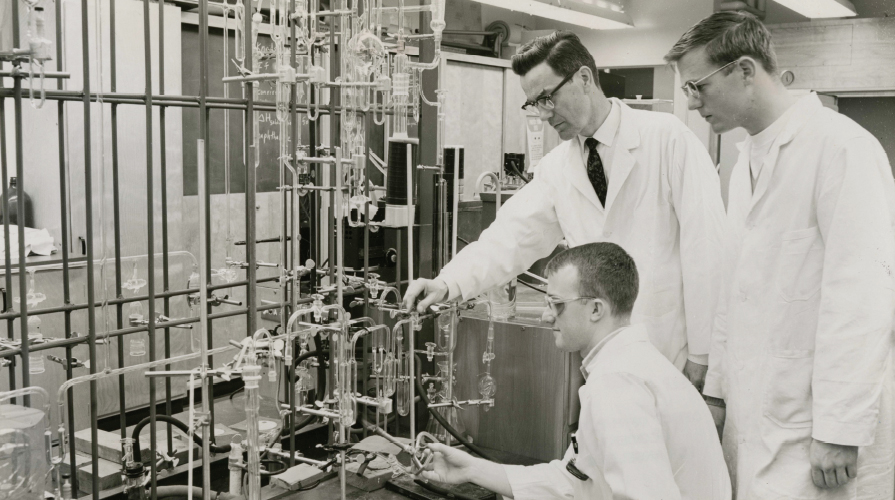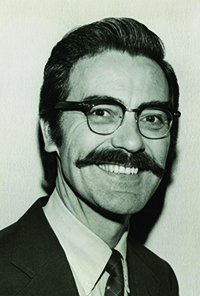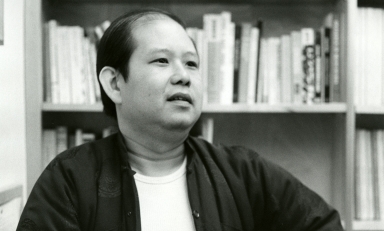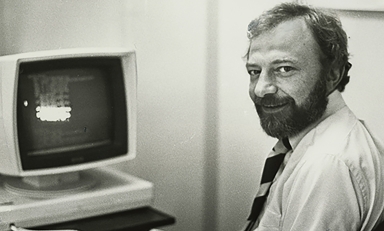
The lasting joy of Frank Lambert’s 100 years on Earth was ‘teaching organic chem at Oxy’
After several years as a research and development chemist for Edwal Laboratories, Frank Lambert decided he was better suited to a teaching career and took a position as an instructor at UCLA. In 1948, he became the third tenure-track faculty member in Oxy’s chemistry department, where he taught for 33 years before retiring as professor of chemistry emeritus in 1981.
But retirement was an illusory concept for the Minneapolis native, who died Dec. 28, 2018, in La Verne at the age of 100. Lambert became the first permanent scientific consultant at the Getty Museum and helped establish the Getty Conservation Institute. More recently, he was a tireless advocate for the energy dispersal model of entropy and was credited for the adoption of that model in some introductory textbooks.
“I’ve been incredibly lucky since retirement in correcting the 1898 definition of a scientific concept, entropy, so that now 29 chem texts use my definition rather than that of the 20th century,” he wrote to Occidental magazine in 2012. “But the lasting memory and joy of my wife’s and mine is of teaching organic chem at Oxy.”
Lambert graduated from Harvard College and earned his Ph.D. in chemistry from the University of Chicago. A specialist in the halogenation of organic compounds and polarography of organic halogen compounds, he became the first Oxy faculty member to be awarded a National Science Foundation research grant in 1955. He subsequently was named an NSF Science Faculty Fellow in 1957 and 1969. Lambert also served as president of the California Association of Chemistry Teachers and as a councilor of the American Chemical Society, and he was the recipient of the first Donald R. Loftsgordon Award for Outstanding Teaching in 1967, which has been voted on by the Oxy senior class every year since.After “disastrous experiences” in Chemistry 1 and 2 classes at Oxy, Jim Sanborn ’67, a biology/premed major, enrolled in Organic Chemistry in fall 1964—his first encounter with Lambert. “His enthusiasm for organic chemistry was contagious,” Sanborn says. “His lectures were fact-packed and informative, and his knowledge extended to chemical happenings outside the laboratory.”
Three terms of Organic Chemistry were the highlight of Sanborn’s chemistry education at Occidental, and he went on to earn a Ph.D. in organic chemistry at UC Riverside, focusing on pesticide chemistry. “Chemistry was a constant thread in my workplace from 1972 to 2011, in government, industry, and academia,” says Sanborn, who reconnected with Lambert in 2004 after reading about his work on entropy—a concept that Lambert admitted not understanding at Harvard or grad school—in the pages of Occidental.
“Frank Lambert’s former students will remember him as an extraordinary teacher, but he is also remembered by me as an exceptional mentor—as a new, inexperienced teacher coming to Oxy, I was the grateful recipient of his many pearls of wisdom on how to inspire the confidence and best efforts of the students I’d be teaching,” says emeritus professor of chemistry Donald Deardorff. “I tried to honor Frank’s legacy for those 34 years I taught at Oxy. It was a profound privilege to know him.”
Lambert and his wife, Bernice (“Bunni”), who died in 2014, had no children. “Eight hundred chemistry majors over the past 20 years have brought me up,” he quipped in 1967—and hundreds more would follow.
“He treated all students equally, whether they were chemistry, premed, biology, or other non-science majors,” Sanborn says. Writing to the magazine in 2012, biology major Elliott Oppenheim ’69 credited Lambert with “influencing my life and career and philosophy of life. If there were anyone who has stamped a Culleyesque footprint on the campus, it would be Lambert, who enriched so many scientifically bound minds.”




